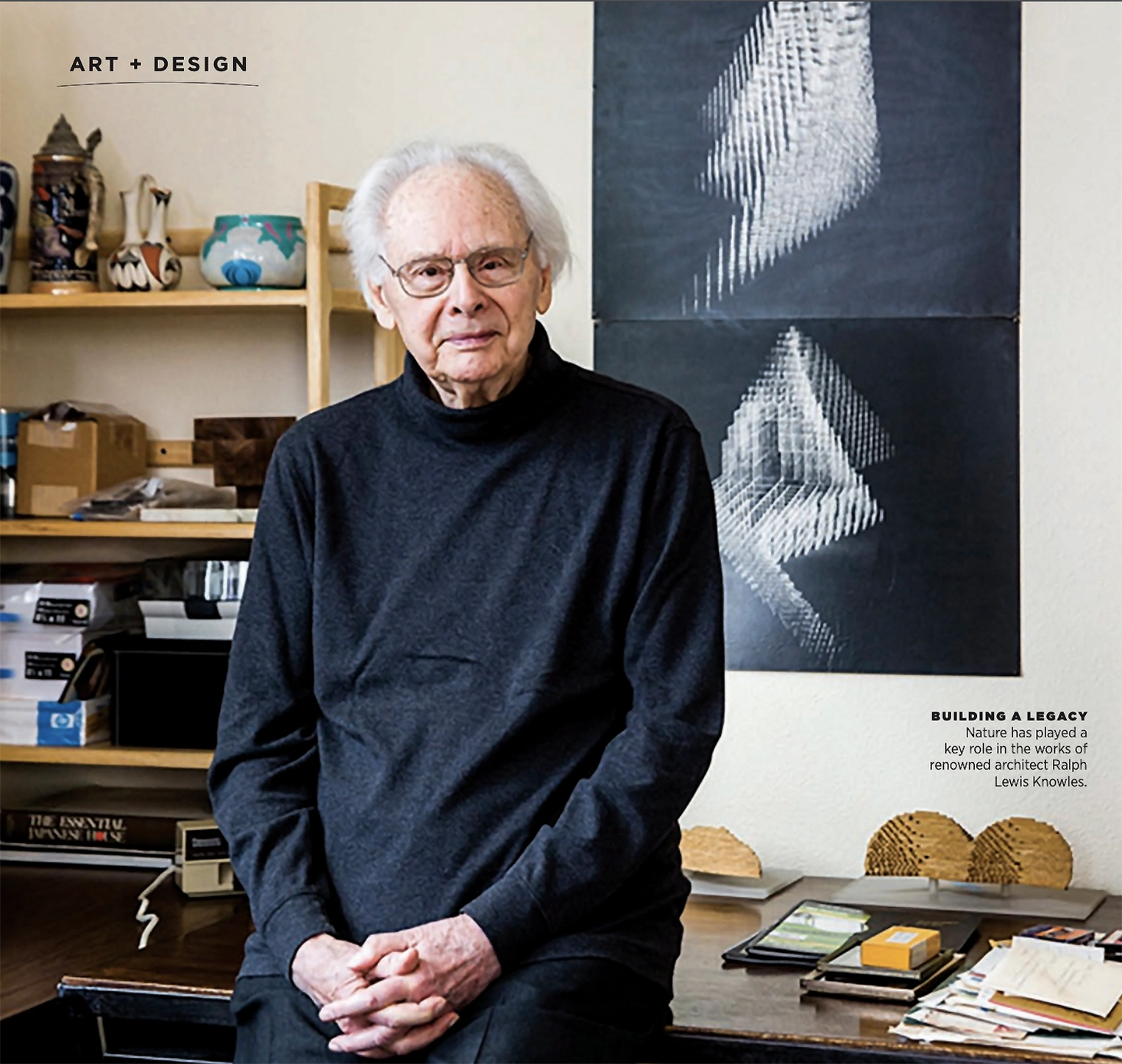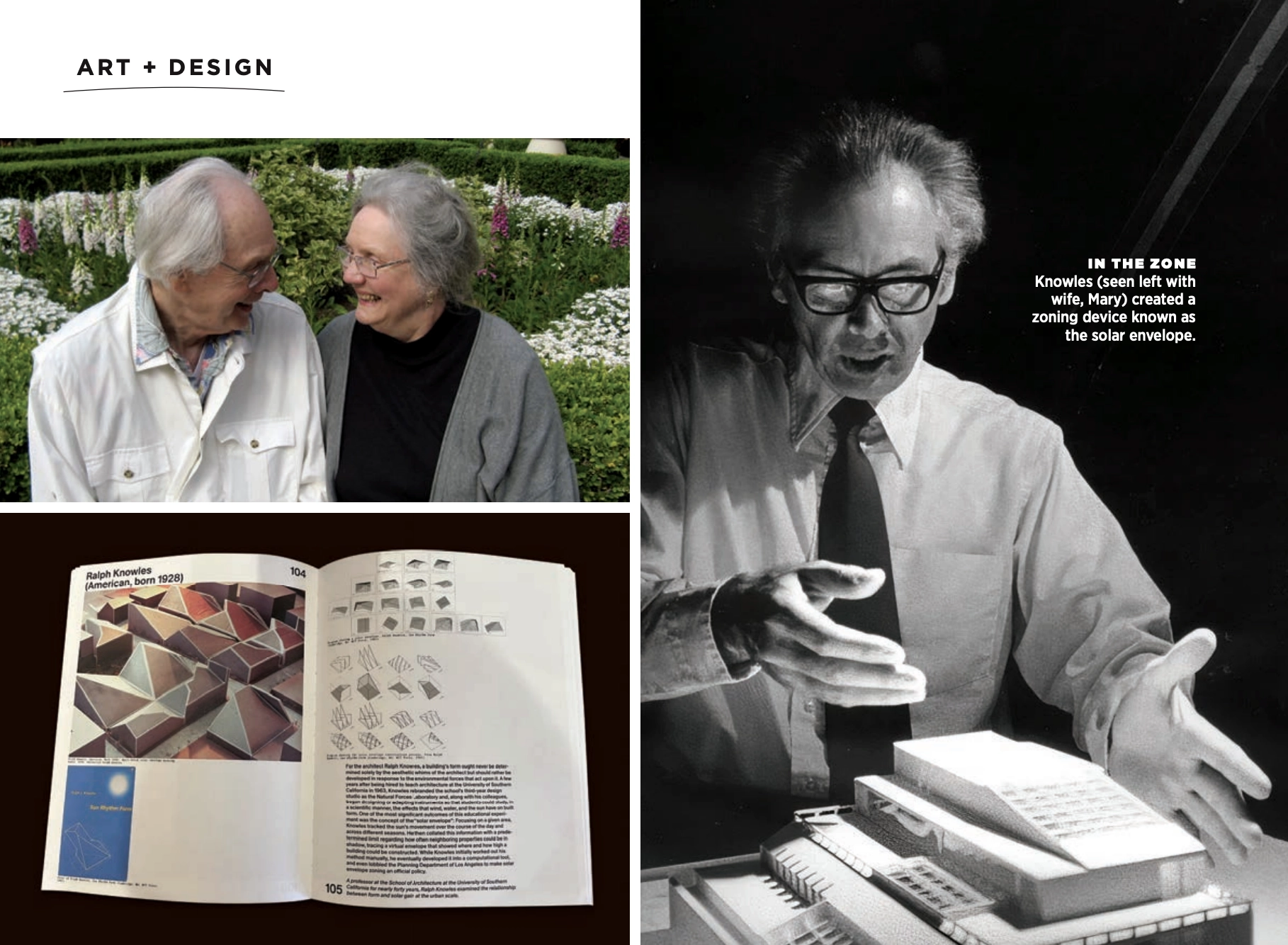
CLIMATE CONSCIOUS
Architect Ralph Lewis Knowles discusses his lasting impact on environmental design
By Sara Smola of The Pasadena Magazine
“If you pay attention to nature in design, the results will be beautiful,” says Ralph Lewis Knowles, former interim dean and professor emeritus of the University of Southern California School of Architecture. Currently, the renowned architect and his wife, Mary, are surrounded by both nature and beauty at his residence at MonteCedro, a picturesque eight-acre resort-style senior living community in Altadena perched on the edge of the San Gabriel Mountains. Nature played a key role in the architect’s designs and innovations, which can be traced back to Knowles’ childhood in rural Ohio where he spent long hours playing outside “absorbed in the rhythms of nature.”
As an undergraduate at North Carolina State University,
Knowles studied with innovators such as R. Buckminster (“Bucky”) Fuller who inspired Knowles to think outside the confines of the profession. Post-graduation, when Knowles began practicing architecture, he “felt stifled by being confined to an office and the ‘normal’ standard design of that time.” “I saw the inklings of other possibilities and had questions I wanted to answer.” he says.

After obtaining his Master of Architecture degree from MIT, Knowles sought out a career in academia with flexibility to pursue those possibilities. He joined the faculty at the USC School of Architecture in 1963, where he taught for 40 years.
At USC, Knowles began to research nature’s impact on buildings and founded the Natural Forces Laboratory to study structures within the context of their surroundings. “We were interested in how buildings responded to the elements such as sun, wind, rain, and earthquakes,” explains Knowles. The testing lab served as a “kind of forerunner” to USC’s building science program and helped launch the school’s interest in sustainability. Knowles’ work with his students included solving design challenges within nature-inspired parameters. For the lay person, this means designing for a specific location instead of just for aesthetics.
“A building designed for the flat desert will not look or perform like one located on a wooded mountain side in the temperate zone,” says Knowles. “Different latitudes will exhibit different characteristics, unlike our sealed, machine-heated and cooled buildings of today that eat energy.”
To date, Knowles is the author of seven books and more than 50 articles. He has received myriad accolades, including the American Institute of Architects’ Medal for Research and the Passive Solar Pioneer Award from the American Solar Energy Society.
In 2023, Knowles was included in New York City’s Museum of Modern Art (MoMA) publication “Emerging Ecologies: Architecture and the Rise of Environmentalism,” featuring design pioneers and projects that explore the connection between architecture and environmental sustainability, further cementing Knowles’ impact and in uence in the eld. Knowles’ most notable accomplishment is his invention of the “solar envelope,” a zoning device method wherein buildings in urban areas maximize solar access. This was a radical idea at the time of invention in the late 1960’s. “Designing within the envelope guarantees access to the direct rays of the sun within certain times of the day for light, heat, energy, and the quality of life,” says Knowles.
-The Pasadena Magazine